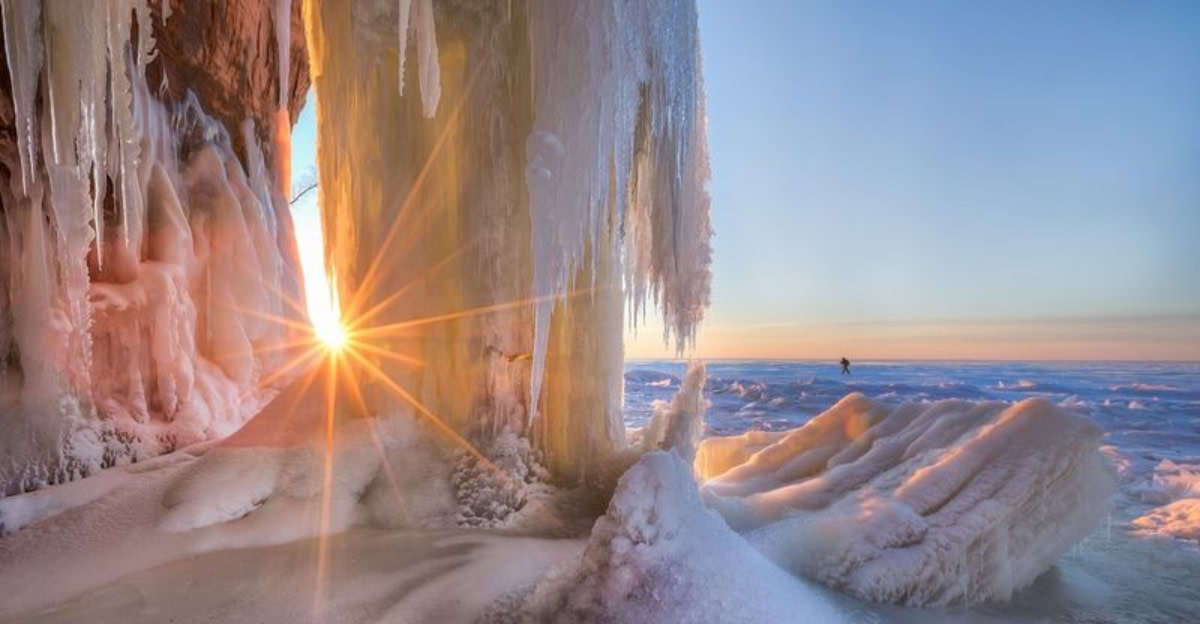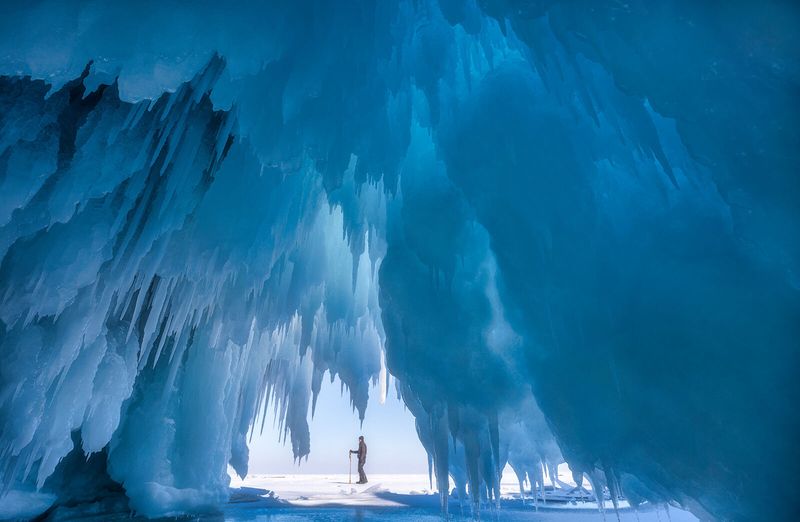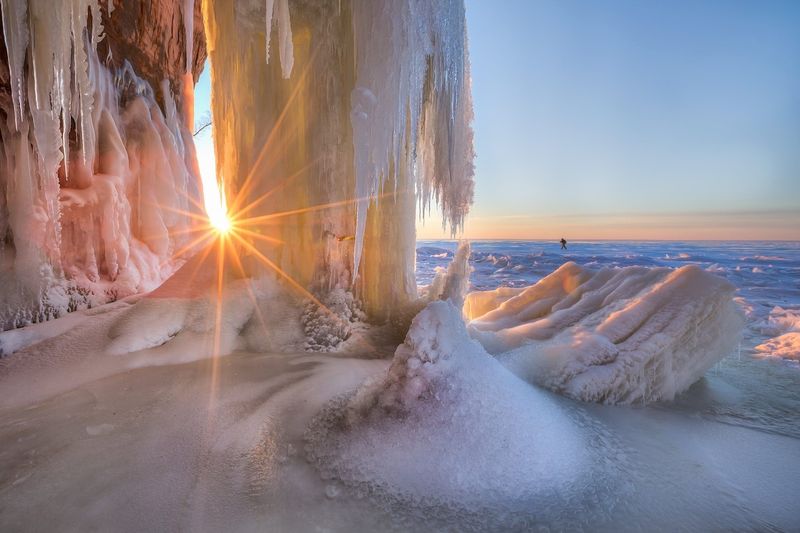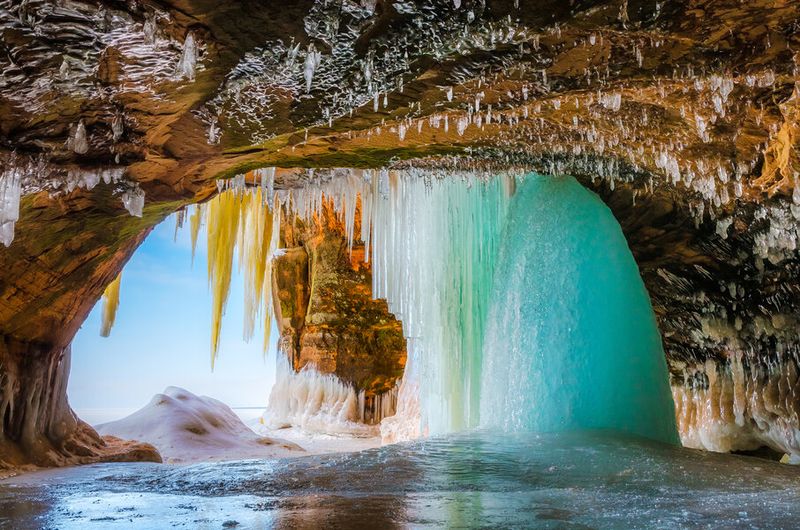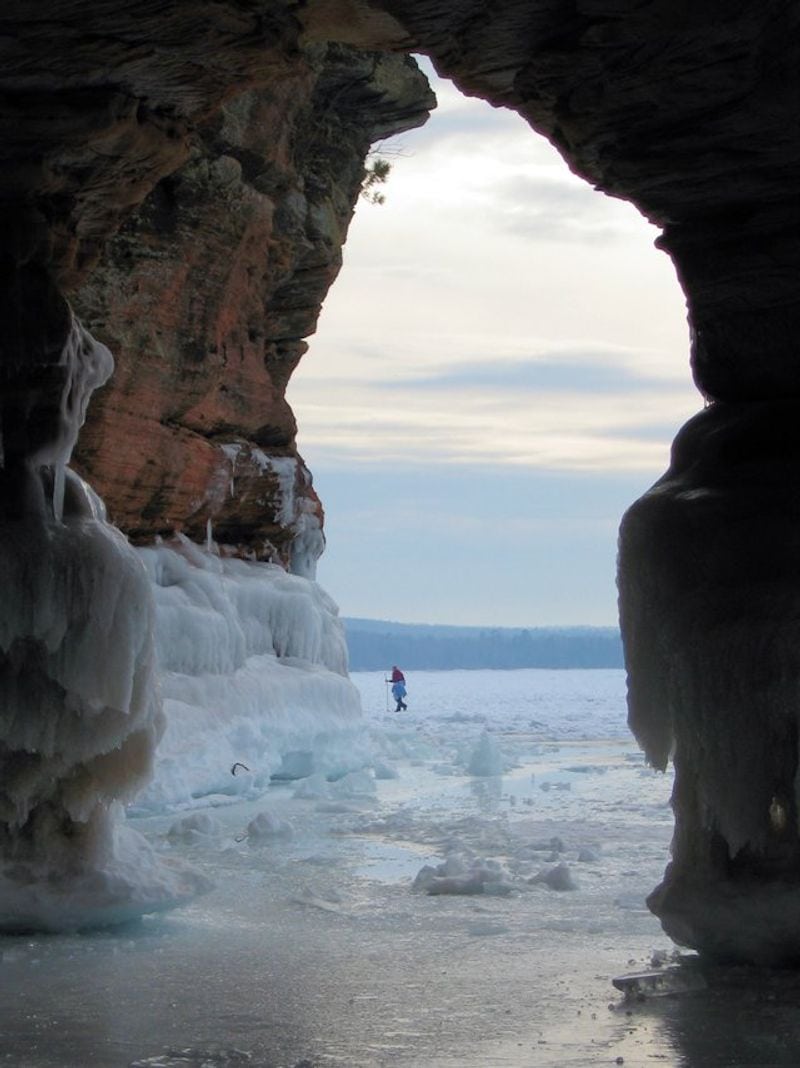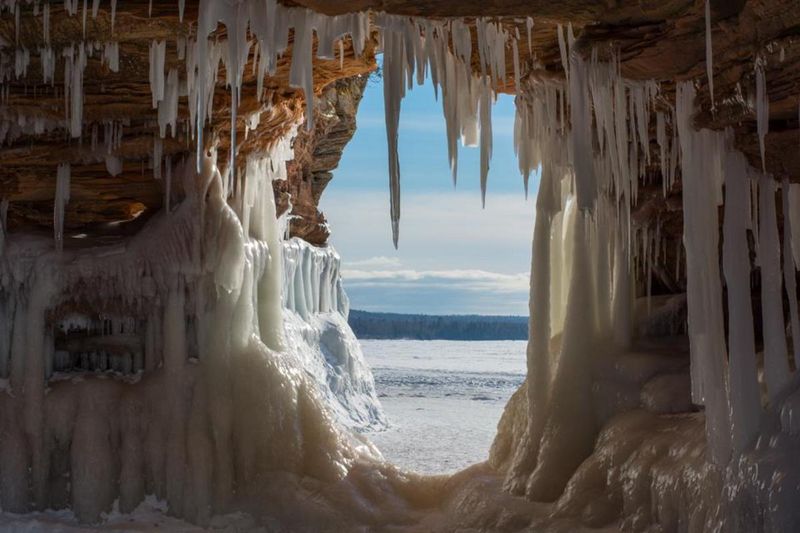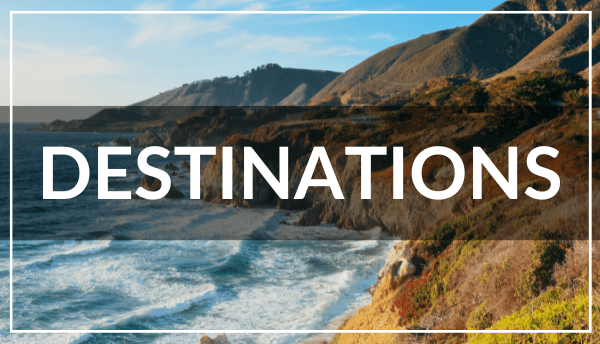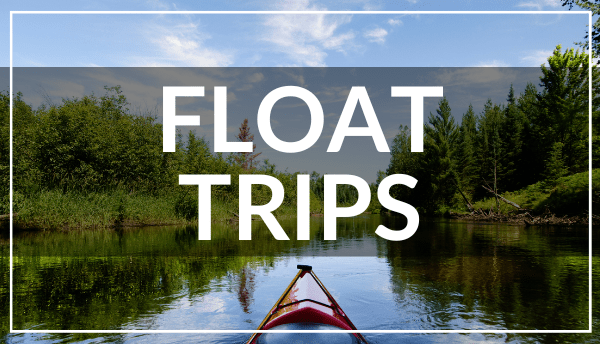Tucked between the small towns of Bayfield and Cornucopia along Lake Superior’s shoreline lies a winter wonderland that seems almost magical. When temperatures drop and the great lake freezes, remarkable ice caves form along the sandstone cliffs of the Bayfield Peninsula. These natural formations create a breathtaking display as sunlight filters through layers of frozen water, making the ice appear to glow from within like nature’s own light show.
Nature’s Frozen Light Show
The glowing effect in these ice caves isn’t some trick of photography—it’s genuine natural magic. When winter sunlight penetrates the frozen formations, it interacts with mineral-rich ice layers created from Lake Superior’s waters. The result? An otherworldly blue-white radiance that shifts and changes throughout the day.
The caves’ unique glow comes from how light scatters through different densities of ice. Thicker sections absorb red light wavelengths while allowing blue to pass through, creating that signature ethereal blue illumination. The red sandstone backdrop enhances this effect, providing stunning contrast.
Photographers flock to capture this phenomenon, but locals insist nothing compares to witnessing it firsthand—standing inside a cathedral of ice as sunshine transforms ordinary frozen water into luminous natural art.
Formation of Winter’s Frozen Sculptures
These spectacular formations begin their life cycle each winter when Lake Superior’s powerful waves crash against the peninsula’s sandstone cliffs. As temperatures plummet below freezing, water solidifies in layers—sometimes creating ice columns stretching from ceiling to floor.
Wind, temperature fluctuations, and water movement all contribute to the unique shapes. Delicate icicles hang like crystal chandeliers while massive ice curtains drape across rock faces. Some formations resemble frozen waterfalls suspended in time.
The process requires specific conditions: sustained cold temperatures (typically below 10°F for several weeks) and relatively calm waters that allow ice to build up rather than break away. When these factors align perfectly, Mother Nature transforms the ordinary shoreline into an extraordinary ice kingdom that draws visitors from across the country.
Accessing the Frozen Wonderland
Reaching these frozen marvels requires some planning and good timing. The most famous access point is Meyers Beach, approximately 18 miles west of Bayfield and 4 miles east of Cornucopia along Highway 13. From the parking area, visitors embark on a 1.75-mile trek across frozen Lake Superior to reach the most spectacular cave formations.
Accessibility depends entirely on Mother Nature’s cooperation. The National Park Service monitors ice conditions carefully, only declaring the caves accessible when ice thickness reaches at least 10 inches consistently. This safety threshold might occur in January during particularly cold winters, but often doesn’t happen until February—if at all.
Alternative viewing options exist at Red Cliff Bay, where local guides offer tours of similar formations that are sometimes accessible when the National Lakeshore caves aren’t.
Communities Embracing Winter’s Gift
The small towns dotting the Bayfield Peninsula have embraced their icy attraction, creating a supportive ecosystem for winter visitors. Bayfield, with its charming Victorian architecture, serves as the peninsula’s main hub, offering lodging, restaurants, and outfitters who provide ice cleats and guided experiences.
Cornucopia, Wisconsin’s northernmost village, welcomes cave-seekers with small-town hospitality at its general store and cozy cafés. Between these communities, the Red Cliff Band of Lake Superior Chippewa provides cultural context and guided tours of their reservation’s ice formations.
Local businesses have adapted to the seasonal influx, creating ice cave festivals, photography workshops, and warming stations. This economic boost during traditionally slow winter months has transformed the region from summer-only destination to year-round attraction, showcasing how natural wonders can revitalize rural economies.
Safety and Timing: Nature’s Unpredictable Calendar
The window for experiencing these glowing ice caves remains frustratingly unpredictable. Some years, like 2014 and 2015, offered extended viewing periods when over 138,000 visitors flocked to the caves. Other years, the lake never freezes sufficiently for safe access—the last accessible season was 2015.
Proper preparation is essential for those lucky enough to visit. Temperatures often hover below zero with wind chills making it feel much colder. Visitors should wear multiple layers, ice cleats for traction, and carry emergency supplies. The National Park Service recommends allowing 3-4 hours for the round-trip journey.
For real-time conditions, smart travelers check the Apostle Islands National Lakeshore website or call their ice line before heading out. The unpredictability makes witnessing this phenomenon all the more special—a rare alignment of perfect conditions revealing nature’s frozen masterpiece.
